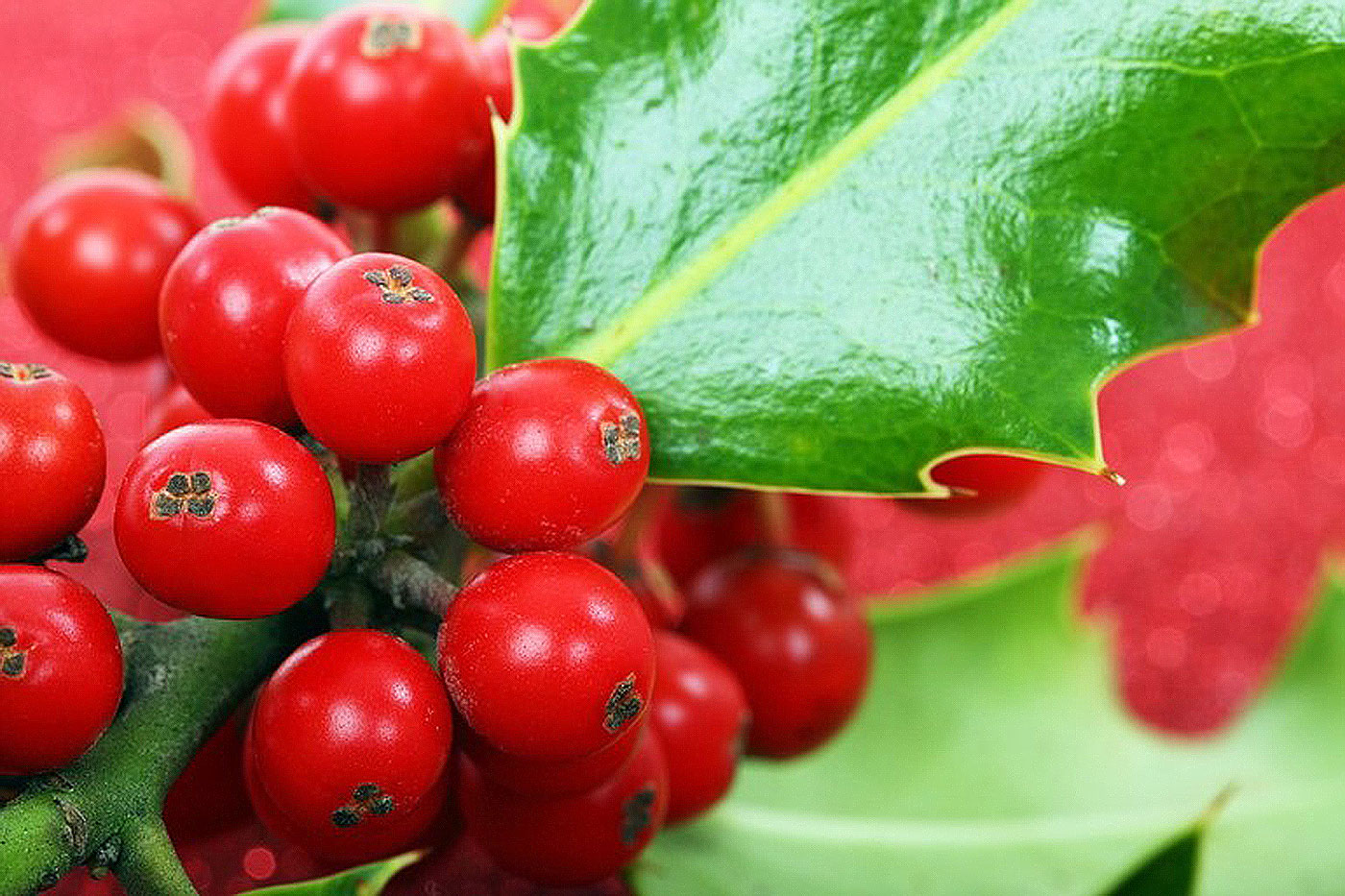
Credit: Pixabay
The tinsel and trappings of the holiday season add color and a festive atmosphere to the average home. However, some houseplants provide their own holiday decoration by producing colorful fruits and berries. Holly, of course, is a very popular plant during the holiday season whose use dates back for centuries. Unfortunately, holly is not easy to fruit as a small plant and requires both male and female plants for berry production. Therefore, the small holly plants for sale during the holiday season often are adorned with artificial berries.

The traditional red and green colors of Christmas are credited to holly which has been used in holiday decor since the Roman era.
English holly (Ilex aquifolium) which has glossy dark green leaves with spines makes an attractive houseplant. Indoors this holly requires an acid growing medium, so fertilization should be done with an acid reaction fertilizer such as those sold for azaleas or rhododendrons. Chinese, or horned holly (Ilex cornuta) has glassy leaves with fewer spines but still is quite attractive.
Jerusalem Cherry (Solanum pseudocapsicum), which once was a very popular Christmas plant. A member of the Solanaceae plant family, Jerusalem Cherry's berry-like fruits contain the toxic alkaloid solanocapsine. The latter, if ingested, can cause considerable gastric distress in humans and pets. Thus, the plants availability has decreased significantly in recent years.
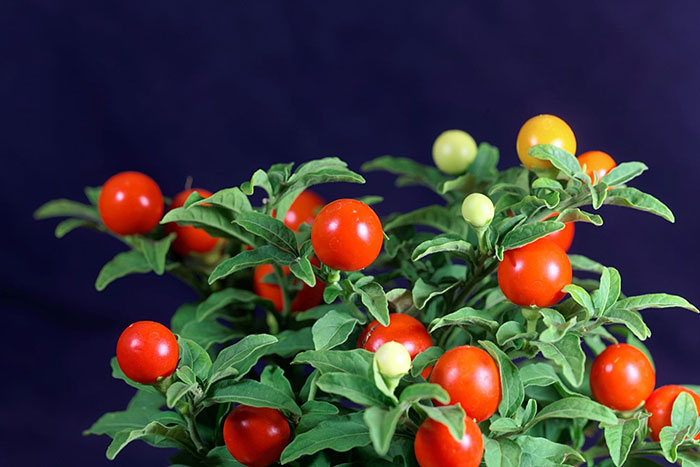
Once popular as a holiday potted plant, Jerusalem cherry has fallen out of favor because of its toxicity.
Ornamental peppers (Capsicum annuum) have gained recent popularity as annual garden plants because of the myriad of new varieties available. However, some of the first new varieties (e.g., 'Holiday Cheer') were developed, in part, for potted plant sales during the Christmas season to replace the toxic Jerusalem Cherry. 'Holiday Cheer' is a 1979 All American Selections winner which bears round fruits which start yellow but change to a bright red color. Very pungent, the fruits are not recommended for consumption. 'Red Onyx' is a more recent AAS winner with bright red fruits borne on plants with dark foliage.
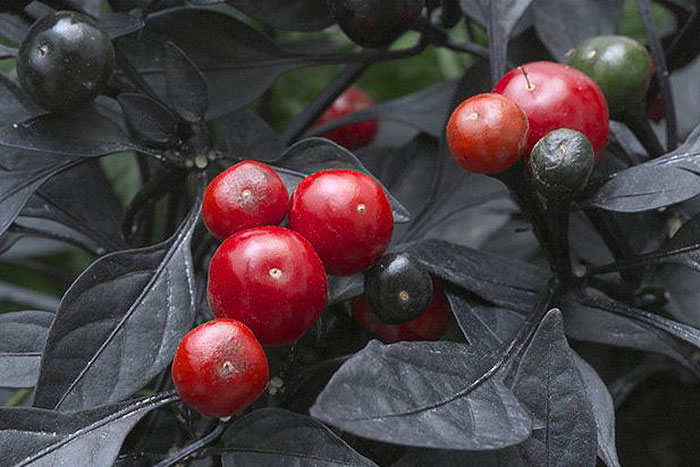
'Red Onyx' pepper bears bright red fruit against blackish green foliage for an interesting holiday effect. Credit: AAS selections
Coral Berry (Ardisia crenata) has deep green, leathery leaves and bright red berries about the size of holly berries. Its combination of colors makes it particularly attractive for the holidays. Coral Berry prefers rich, acid soil high in organic matter, much the same as hollies do. It is best to water this plant with either rainwater or distilled water where tap water is hard and high in calcium.
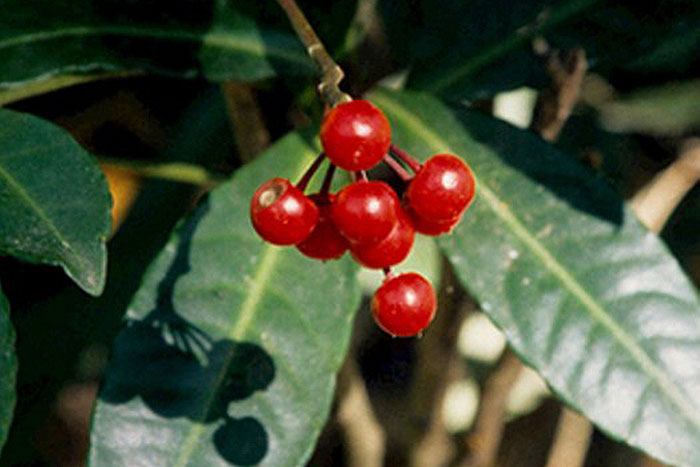
Ardisia, or coral berry, combines the red berries and green foliage of holly on a plant that thrives indoors. Credit: University of Florida
Coffee (Coffea arabica) is not a common houseplant, but it can be grown indoors if given proper conditions. It is an interesting conversation-piece for the holiday season. The leaves of coffee are a dark, glossy green with wavy margins. It, too, bears red berries when they are allowed to ripen. Coffee requires bright light, cool temperatures, and constant moisture. If these conditions are not provided, leaf margins will scorch, and leaf drop may result.
In the Victorian era, Christmas celebrations included placing an orange in the Christmas stocking. Citrus plants can be particularly unique for Christmas decoration, when available. The small-fruited citrus, Calamondin orange (Citrus mitis) bears long-lasting orange fruits about an inch in diameter. The plant grows best in a sunny window. Orange blossoms are very fragrant, which is another added benefit. Although edible (non-toxic) the fruit of Calamondin orange is quite sour.
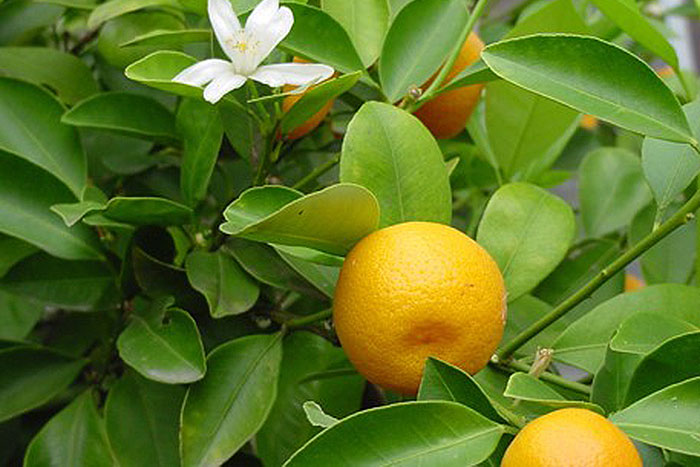
Calamondin orange is a petite natural hybrid between kumquat and mandarin that is suitable for container growing. Credit: Texas A&M University
Other citrus plants also are available that may be used for window decoration. However, most do not flower and bear fruit as heavily on small plants as the Calamondin orange. Ponderosa lemon (Citrus x pyriformis), Meyer lemon (Citrus x meyeri), and dwarf Tahiti orange (Citrus x limonia 'Otaheite') all will bear fruit indoors, given proper conditions. Seeds found in citrus fruits bought from a supermarket will often germinate and grow if planted. These plants become quite large, and rarely bear fruit when grown indoors. The dwarf forms of citrus are far better houseplants for the holidays or other times of the year.
Fruiting plants need bright light to produce enough sugars and other food materials for flowering and fruiting to occur. Keep plants uniformly moist, and water with a soluble houseplant fertilizer every two to three weeks throughout the year. Plants benefit from being placed outside during the summer.